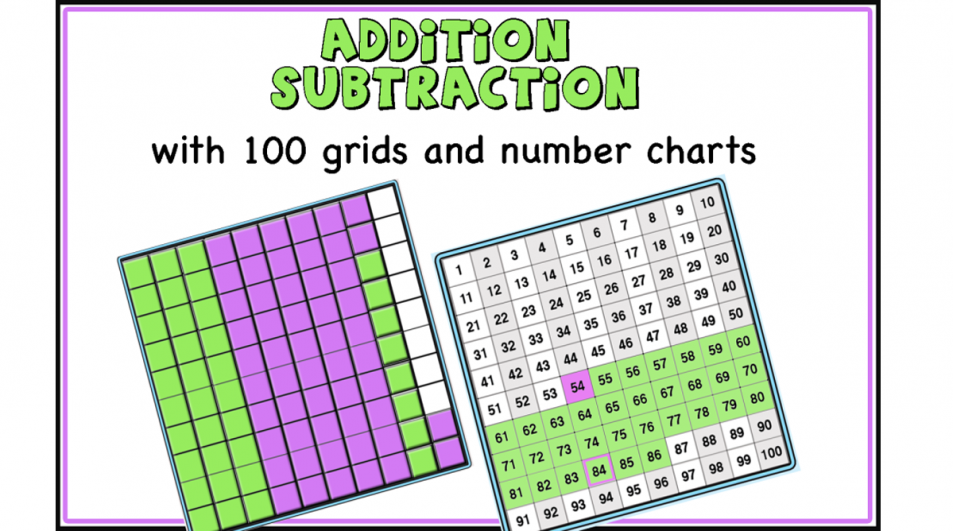Grades 1-3
Using 100 grids to solve addition and subtraction problems is a great way for students to understand place value and regrouping. Placing/coloring tens and ones on a 100 (or more) grid helps them represent the first number and then add or subtract the second. They can see how the ones turn into tens in addition and how tens “break” to subtract ones.
The students can add the tens first and the ones after or add the tens and ones of the first number and then the tens and ones of the other number making sure the ones go together to complete (or not) a new ten.
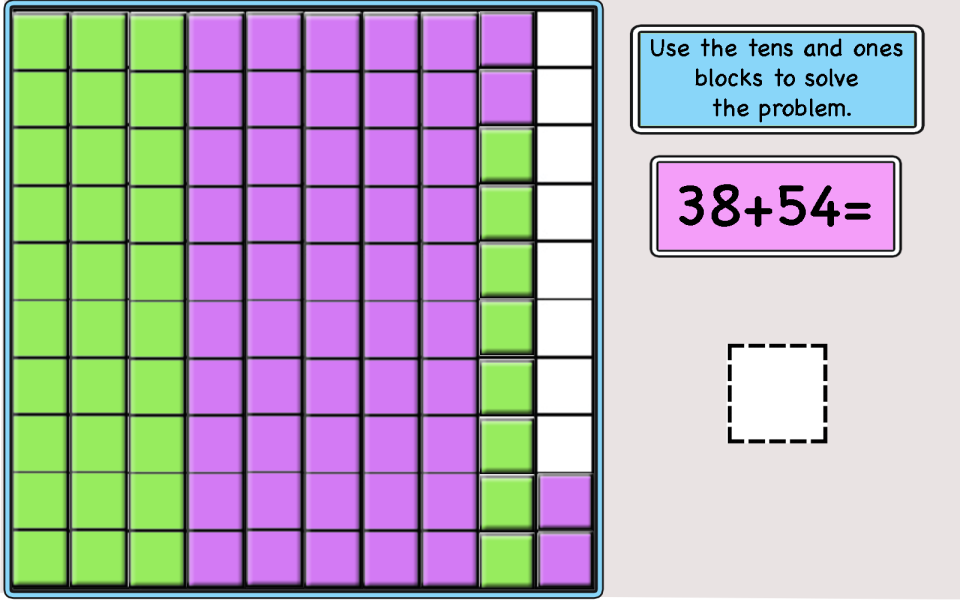
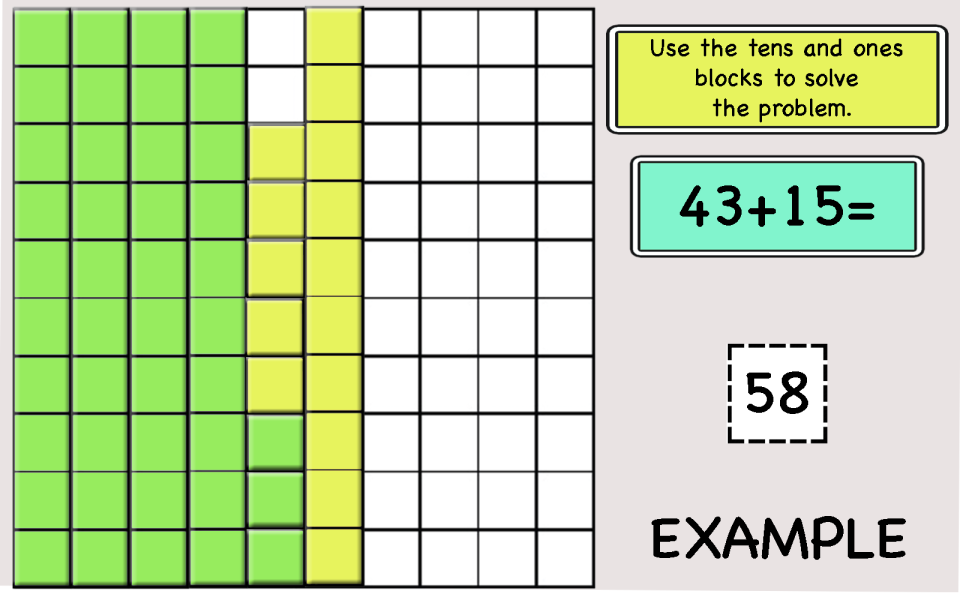
Make sure that the students can represent the numbers on the 100 grid and start by adding one digit numbers, Then add 10 and so on.
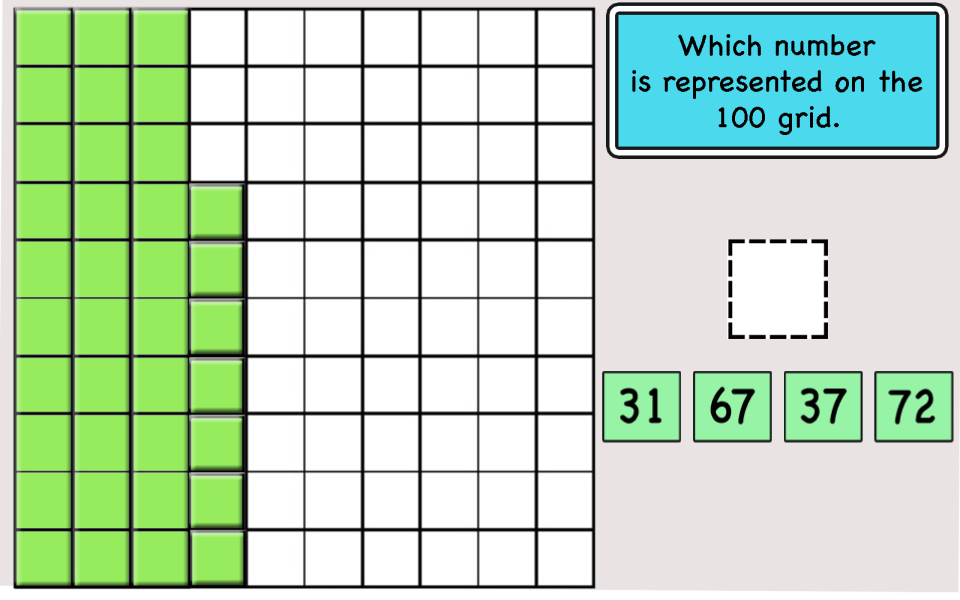
For subtraction, the students represent the first number on the grid (color the blocks) and then color over the number that is subtracted. The blocks that remain the first color represent the answer. In the slides below the students cover the colored blocks with grey ones.
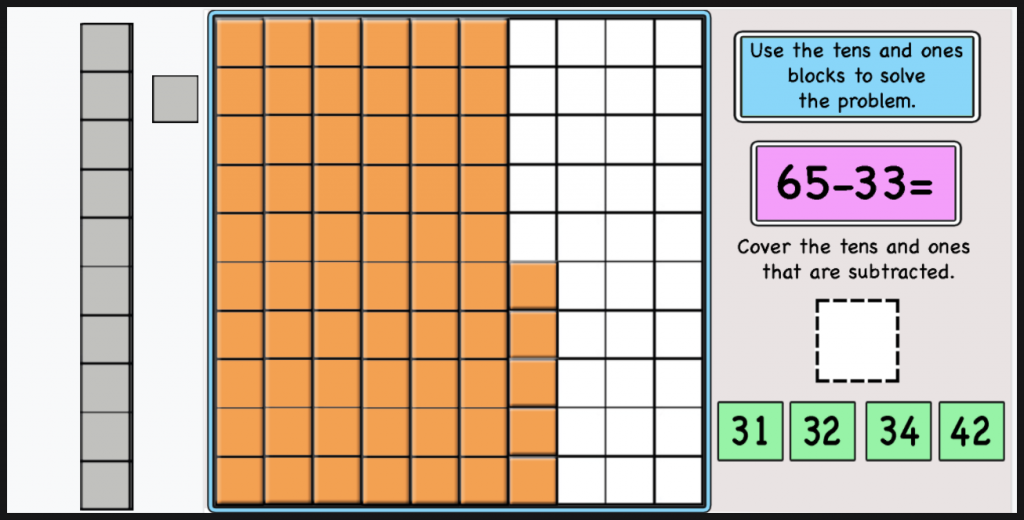

Using the 100 chart for addition and subtraction.
The next step is to gain fluency with the 100 chart and use it to add or subtract. For addition, the students locate the first number of the expression and add the second one, tens, and ones. Start by adding single-digit numbers, then one ten, more tens, and then two-digit numbers. Going backward for subtraction is more difficult but when you start slowly going back less than 10, then 10s, and then two-digits numbers the students are successful.
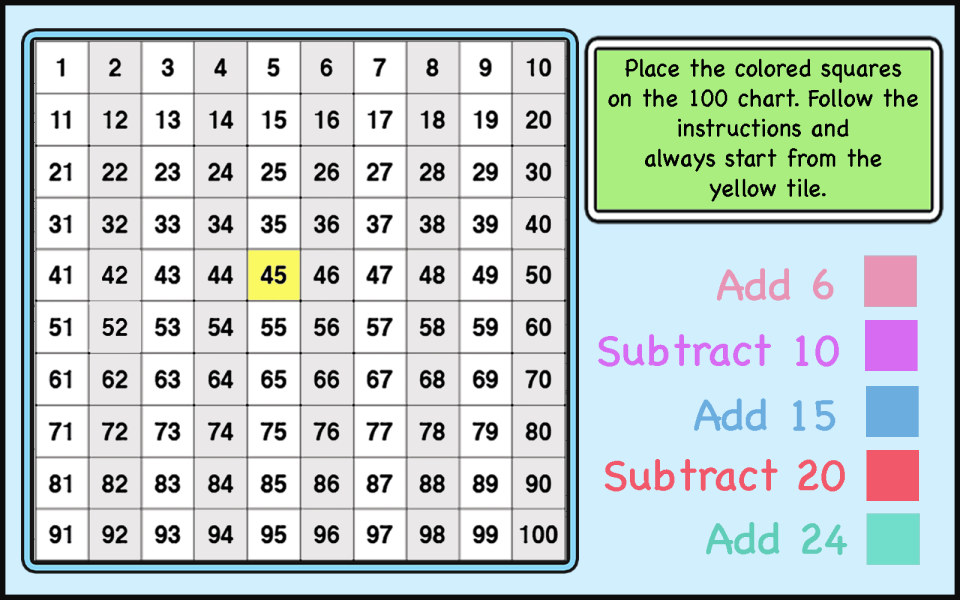
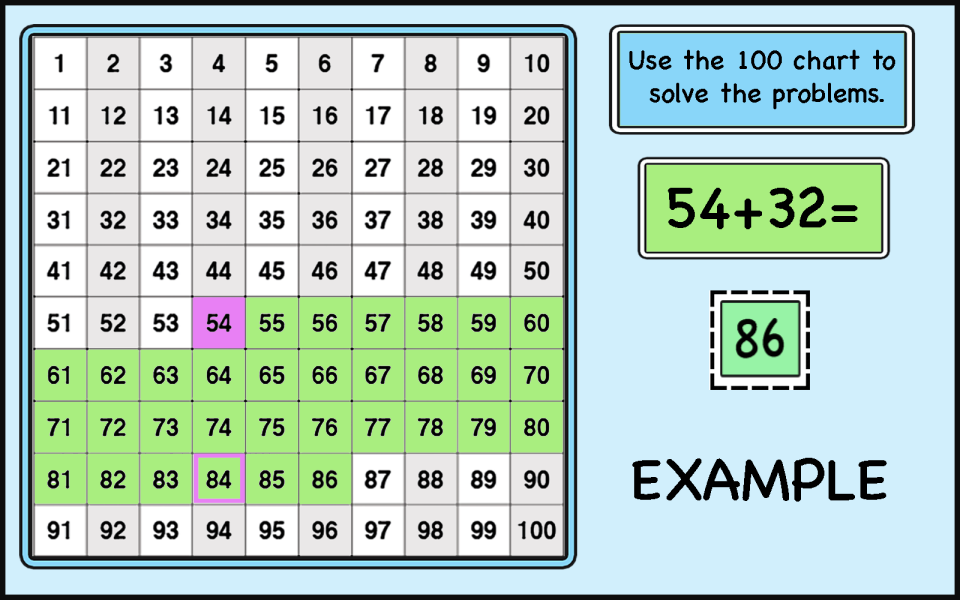
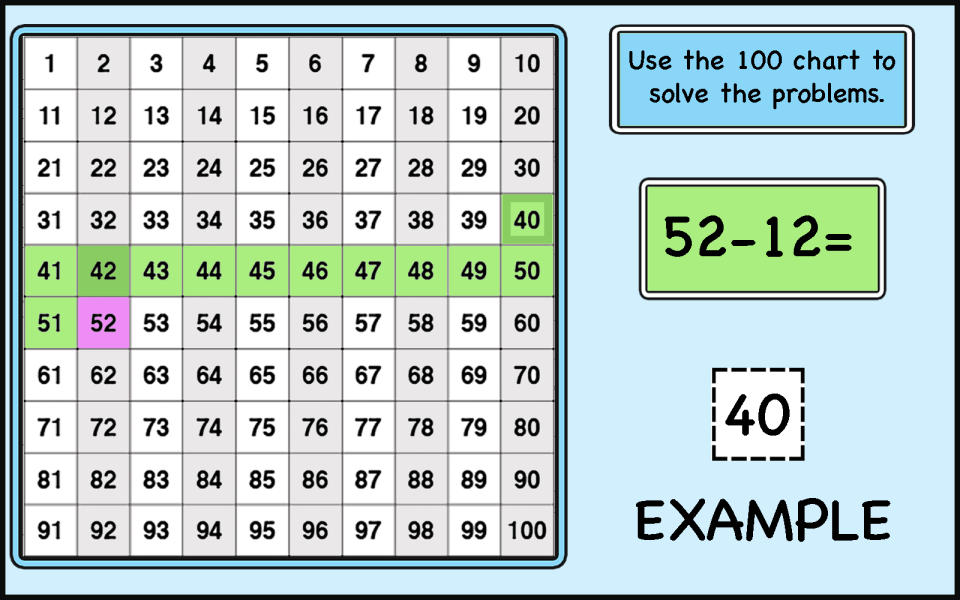
For adding two-digit numbers that go beyond 100 you can use bigger charts.
These activities prepare the students for the addition algorithms and help them gain deep understanding of place value and regrouping. Another way to enforce and strengthen students understanding. You just need laminated 100 grids and 100 charts and some whiteboard markers.
We have created some digital activities for the students to practice addition and subtractions on 100 grids and charts. The students can practice
- Recognizing the number represented on a 100 grid.
- Adding two-digit numbers by placing 10s and 1s. (with and without regrouping)
- Subtracting numbers by covering the blocks of the number to be subtracted. (with and without regrouping)
- Using the 100 chart for adding and subtracting numbers up to 100.
- Using the 200 chart for adding and subtracting two and three-digit numbers.
As always below is a free version for you.
The premium version includes 114 activities

